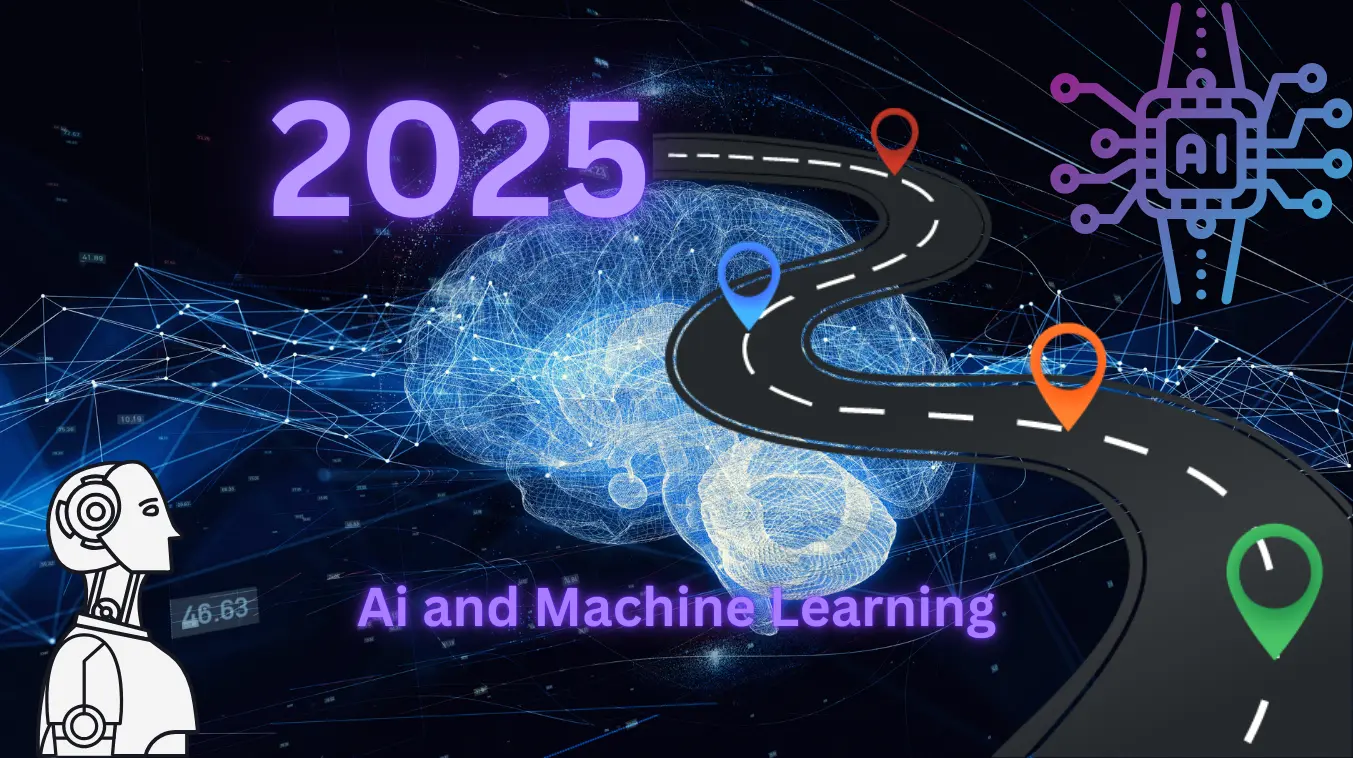
Learn Ai and Machine Learning in 2025
3 min read
Disclaimer:
This Article is not a detailed guide on how to master ai and machine learning, rather it provides a high level view on the roadmap to learn this field of study and to introduce the readers to the core concepts and libraries to use while learning. I will be dividing this blogpost into separate articles to showcase step by step how to master Ai and Machine Learning.
Phase 1: Building a Strong Foundation
1. Python Programming Basics
Before delving into ML and AI, ensure you have a solid grasp of Python fundamentals:
-
Variables, data types, and control structures
-
Functions and modules
-
Object-oriented programming
-
File handling and exceptions
Resources like Real Python and Python.org are excellent starting points.
2. Mathematics for Machine Learning
A strong mathematical foundation is crucial:
-
Linear Algebra: Vectors, matrices, and operations
-
Calculus: Derivatives and integrals
-
Probability and Statistics: Distributions, mean, variance, and hypothesis testing
-
Optimization: Gradient descent and convex optimization
Books like Mathematics for Machine Learning by Deisenroth et al. and online courses such as Khan Academy can be invaluable.
Phase 2: Data Handling and Visualization
1. NumPy
A fundamental package for numerical computing in Python. It provides support for large, multi-dimensional arrays and matrices, along with a collection of mathematical functions to operate on these arrays. MachineLearningMastery.com
2. Pandas
Essential for data manipulation and analysis. It offers data structures like DataFrames, which are perfect for handling structured data.
3. Matplotlib & Seaborn
These libraries are used for data visualization. Matplotlib provides a flexible platform for creating static, animated, and interactive plots, while Seaborn offers a high-level interface for drawing attractive statistical graphics.
4. Dask
Dask is a parallel computing library that scales Python code from multi-core local machines to large distributed clusters in the cloud. It integrates seamlessly with Pandas and NumPy, making it ideal for handling large datasets.
Phase 3: Core Machine Learning
1. Scikit-learn
A versatile library that provides simple and efficient tools for data mining and data analysis. It includes a wide range of algorithms for classification, regression, clustering, and dimensionality reduction.
2. XGBoost & LightGBM
These are powerful gradient boosting frameworks that are widely used for structured/tabular data. They offer high performance and are particularly effective in Kaggle competitions.
3. CatBoost
A gradient boosting library that handles categorical features naturally, making it a great choice for datasets with categorical variables.
Phase 4: Deep Learning
1. TensorFlow & Keras
TensorFlow is a comprehensive open-source platform for machine learning. Keras, now part of TensorFlow, is a high-level neural networks API that simplifies the process of building and training models.
2. PyTorch
An open-source machine learning library based on the Torch library, PyTorch provides flexibility and speed when building deep learning models.
3. FastAI
Built on top of PyTorch, FastAI simplifies training highly accurate models using modern best practices.
4. JAX
JAX is a high-performance machine learning library developed by Google. It provides automatic differentiation and GPU/TPU support, making it ideal for research and experimentation. (MachineLearningMastery.com)
Phase 5: Specialized Areas
1. Natural Language Processing (NLP)
-
spaCy: An industrial-strength NLP library that provides pre-trained models and supports deep learning workflows.
-
Hugging Face Transformers: A library that provides general-purpose architectures for NLP.
2. Computer Vision
-
OpenCV: A library for computer vision tasks.
-
Detectron2: Facebook AI Research’s next-generation platform for object detection and segmentation.
3. Reinforcement Learning
-
Stable Baselines3: A set of improved implementations of reinforcement learning algorithms based on PyTorch.
-
Ray RLlib: A scalable reinforcement learning library that supports both research and production. (Toxigon)
Phase 6: Advanced Tools and Deployment
1. Ray
A library that provides a simple, universal API for building distributed applications. It’s particularly useful for hyperparameter tuning and distributed training. (Toxigon)
2. H2O.ai
An open-source platform for building machine learning models, H2O.ai supports AutoML and is designed for enterprise applications. (Toxigon)
Learn In Depth:
More Articles
Key Words:
AI machine learning roadmappython learn in 2025